This former magistrates’ court and police station were built in 1901–2, remaining in use until 2000, built on the site of a ‘workhouse’, founded in the will (dated 1642) of the eminent lawyer and judge Sir John Bankes. Born in 1589, he was called to the bar, elected as an MP and knighted in 1631. Three years later, he was appointed Attorney-General and, in 1640, became Chief Justice of the Common Pleas – one of the highest judicial officials in England – until his death, in 1644.
An illustration and text about The Chief Justice of the Common Pleas.
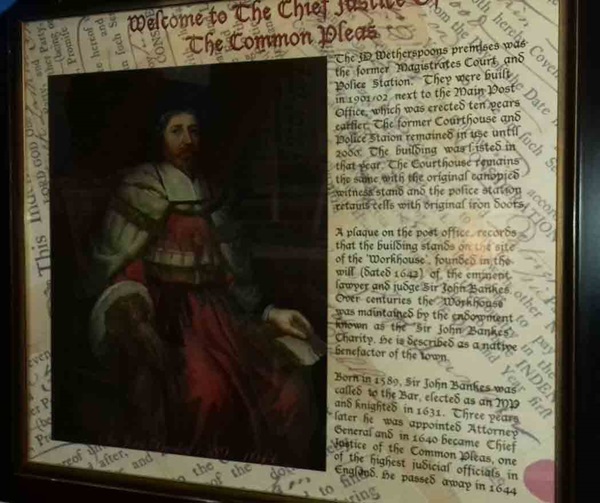
The text reads: This J D Wetherspoon premises was the former magistrates’ court and police station. They were built in 1901-02 next to the main post office, which was erected ten years earlier. The former courthouse and police station remained in use until 2000. The building was listed in that year. The courthouse remains the same with the original canopied witness stand and the police station retains cells with original iron doors.
A plaque on the post office, records that the building stands on the site of the ‘workhouse’, founded in the will (dated 1642) of the eminent lawyer and judge Sir John Banks. Over centuries the ‘workhouse’ was maintained by the endowment known as the Sir John Bankes Charity. He is described as a native benefactor of the town.
Born in 1589, Sir John Bankes was called to the bar, elected as an MP and knighted in 1631. Three years later he was appointed Attorney-General and in 1640 became Chief Justice of the Common Pleas, one of the highest judicial officials in England. He passed away in 1644.
A photograph and text about the Century Theatre.
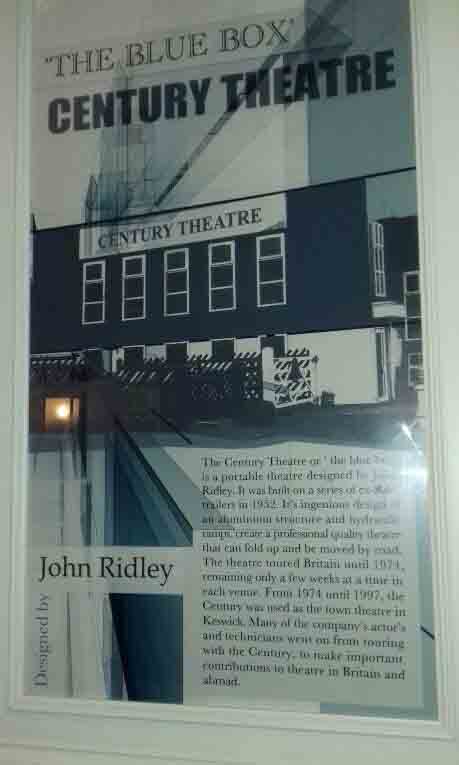
The text reads: The Century Theatre or ‘the blue box’ is a portable theatre designed by John Ridley. It was built on a series of ex-RAF trailers in 1952. Its ingenious design of an aluminium structure and hydraulic ramps, create a professional quality theatre that can fold up and be moved by road. The theatre toured Britain until 1974, remaining only a few weeks at a time in each venue. From 1974 until 1997, the Century was used as the town theatre in Keswick. Many of the company’s actors and technicians went on from touring with the Century, to make important contributions to theatre in Britain and abroad.
A print and text about Samuel Taylor Coleridge.
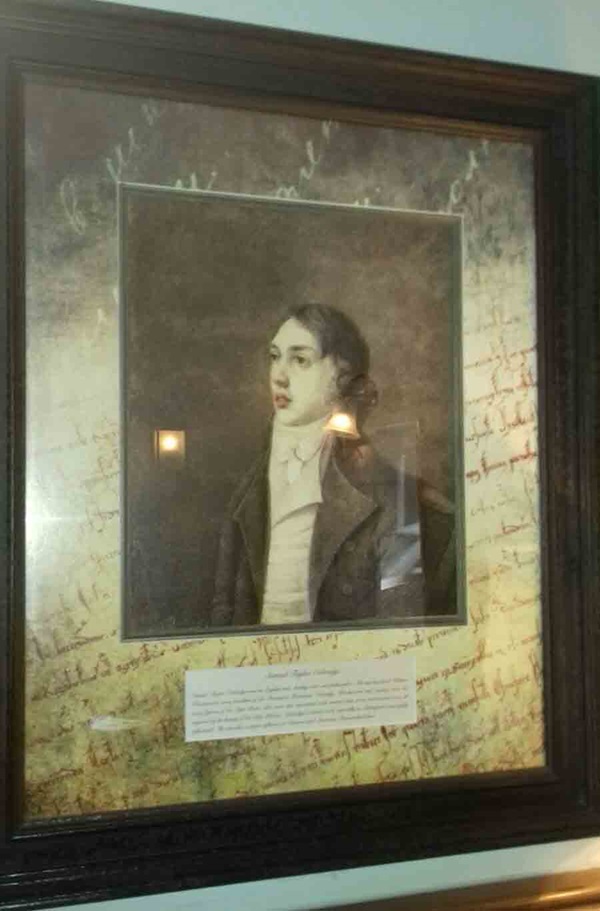
The text reads: Samuel Taylor Coleridge was an English poet, literary critic and philosopher. He and his friend William Wordsworth were founders of the Romantic Movement. Coleridge, Wordsworth and Southey were the main figures of the Lake Poets, who were also associated with several other poets and writers who were all inspired by the beauty of the Lake District. Coleridge’s critical work, especially on Shakespeare was highly influential. He was also a major influence on Emerson and American Transcendentalism.
Text about Jonathan Otley.
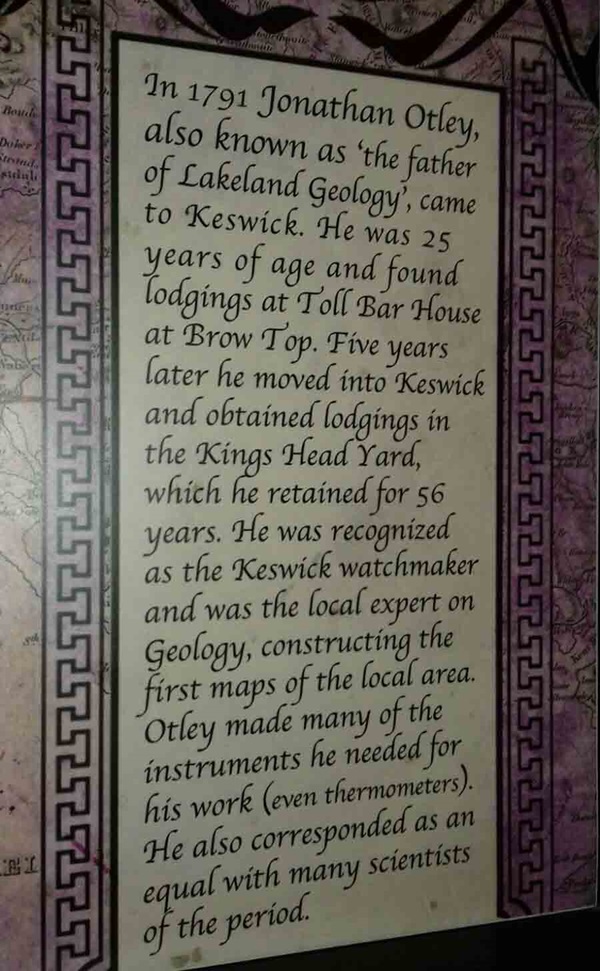
The text reads: In 1791 Jonathan Otley, also known as ‘the father of Lakeland Geology’, came to Keswick. He was 25 years of age and found lodgings at Toll Bar House at Brow Top. Five years later he moved into Keswick and obtained lodgings in the Kings Head Yard, which he retained for 56 years. He was recognised as the Keswick watchmaker and was the local expert on geology, constructing the first maps of the local area. Otley made many of the instruments he needed for his work (even thermometers). He also corresponded as an equal with many scientists of the period.
A print and text about Beatrix Potter.
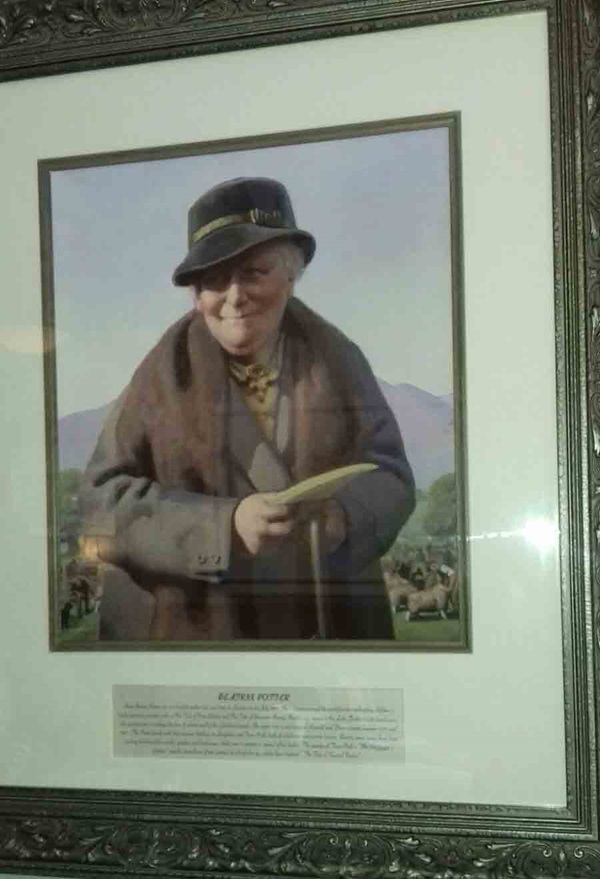
The text reads: Helen Beatrix Potter was an English author who was born in London on 28 July 1866. She is known around the world for her enchanting children’s books featuring animals such as The Tale of Peter Rabbit and The Tale of Benjamin Bunny. Beatrix was drawn to the Lake District by its landscapes, the opportunities to indulge her love of nature and by the Lakeland people. She spent time in and around Keswick and Derwentwater between 1885 and 1907. The Potter family took their summer holidays at Lingholm and Fawe Park, both of which are now private houses. Beatrix spent many hours here making sketches of the woods, gardens and landscape, which were to feature in several of her books. The garden of Fawe Park is Mr McGregor’s Garden and the abundance of red squirrels at Lingholm are said to have inspired The Tale of Squirrel Nutkin.
A photograph of Market Square, 1951.
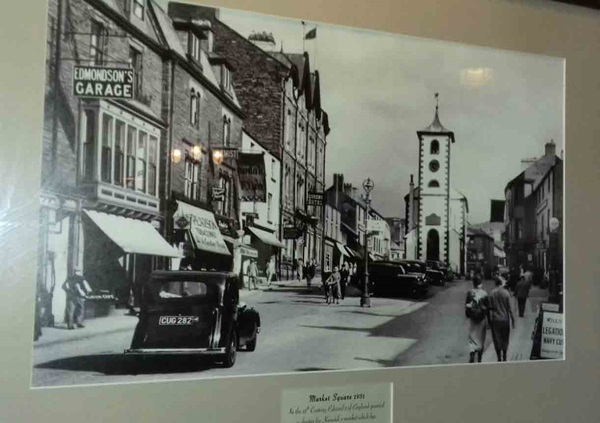
A photograph of a view of Keswick, c1889.
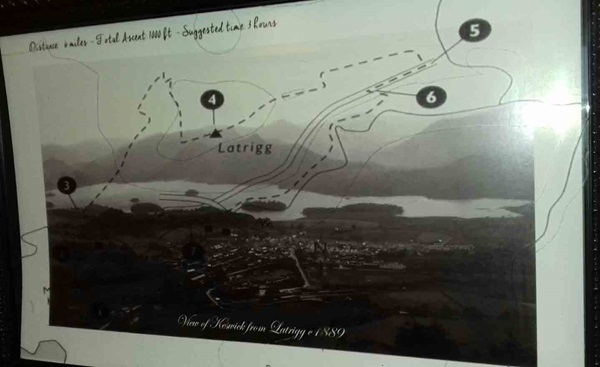
Internal photographs of the pub, showing some of the original features of this former magistrates’ court and police station.
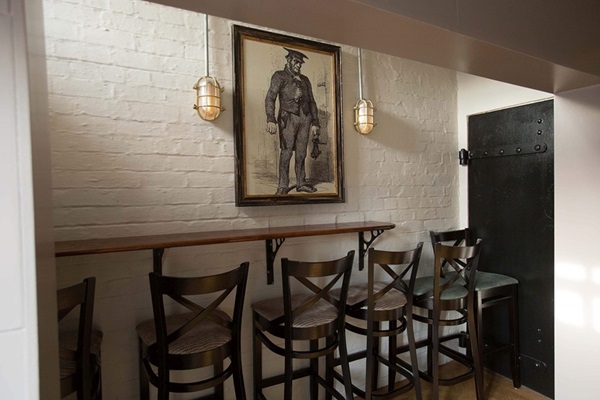
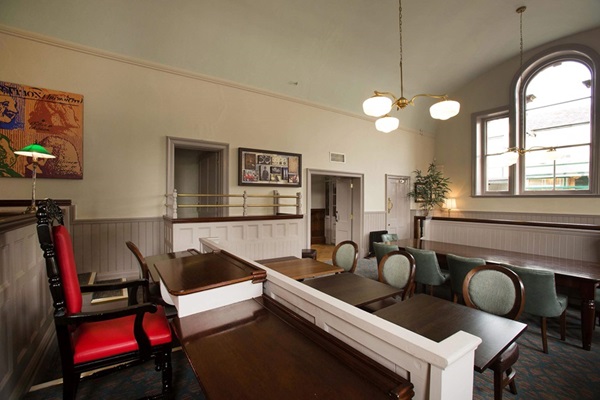
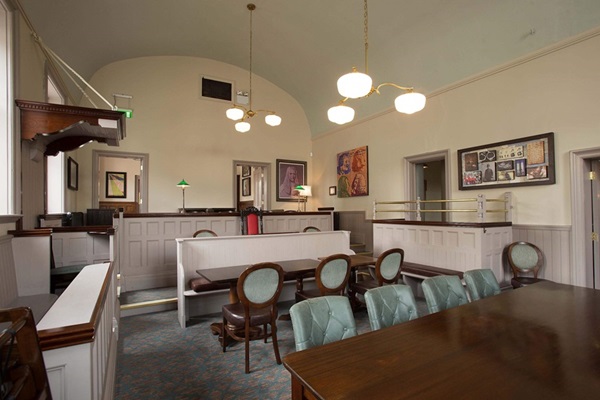
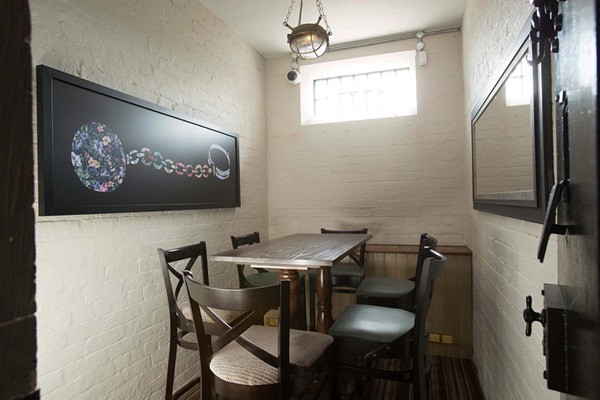
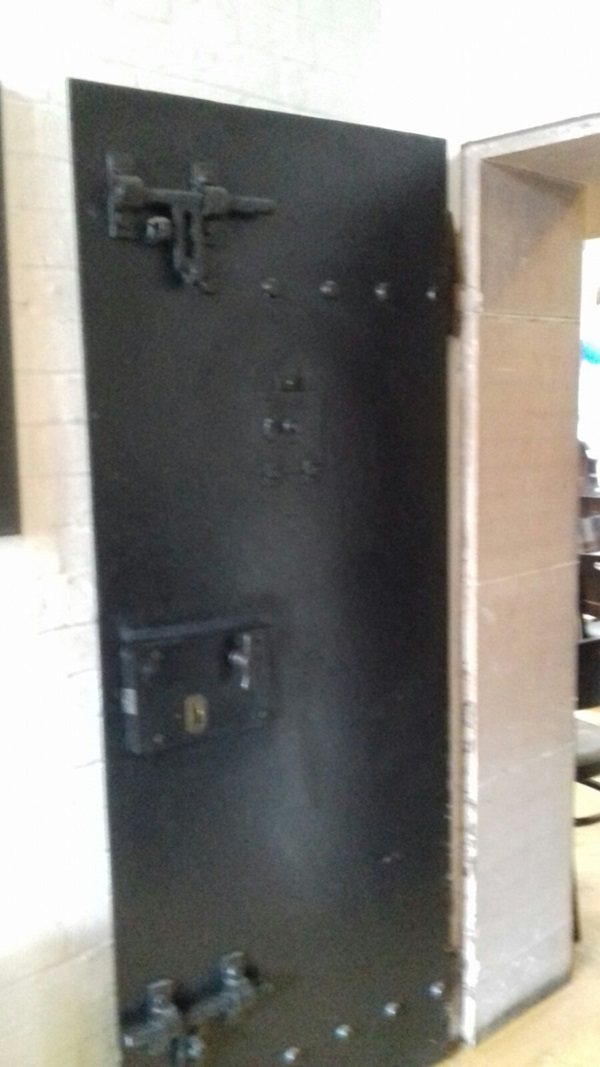
External photograph of the building – main entrance.
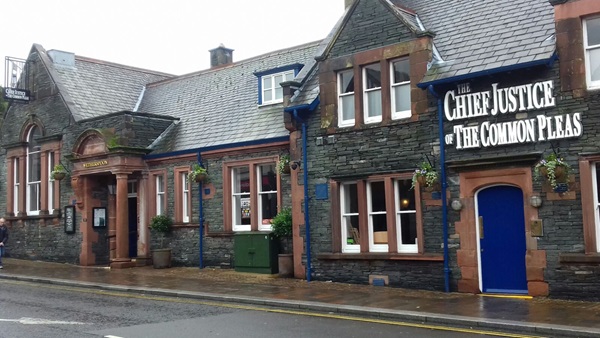
Extract from Wetherspoon News Summer 2018.
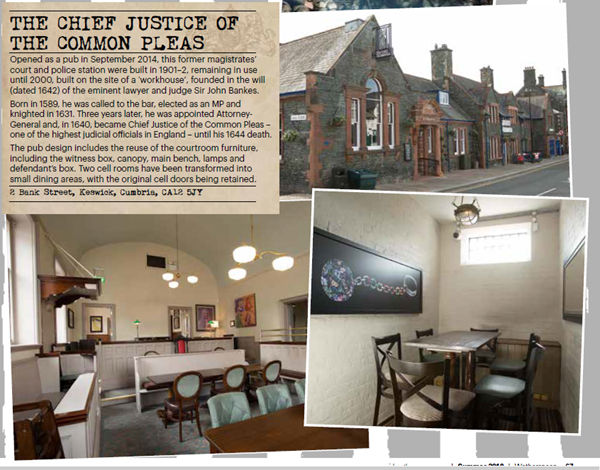
If you have information on the history of this pub, then we’d like you to share it with us. Please e-mail all information to: pubhistories@jdwetherspoon.co.uk